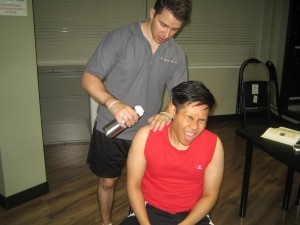Always remember that the appropriate first aid care must be provided when treating scalds or burns. In doing so, it can help minimize the degree of damage on the skin. If you want to be prepared in handling burn injuries, enrolling in a first aid course can help out a lot.
First aid measures for scalds or burns
It is a known fact that you never know when an individual sustains a burn; it can be accidental or due to negligence. You can perform this first aid measure when treating scalds and burns whether at home or in the workplace.
- Put a stop to the burning process right away. This would involve removing the individual from the area, extinguishing the flames with water or smothering the flames using a blanket. Just be careful not to put yourself at risk of getting burned as well.
- Remove any clothing or jewelry that is close to the burned area. Nevertheless, do not attempt to remove if it is stuck on the burned skin since it can cause more damage.
- Cool the burn using cool or lukewarm water for 10-30 minutes. This must be done within 20 minutes after the injury was sustained. Do not use ice, iced water or greasy creams and substances on the burned area.
- The individual must stay warm by using a blanket or layers of clothing but avoid putting them on the affected area. By keeping the individual warm, it prevents hypothermia from setting in. Take note that this is a risk if the burned area is large, especially among the elderly and young children.
- Cover the burn using a cling film. All you have to do is to apply the cling film in a layer over the burned area instead of wrapping it around the affected limb. An alternative is a clean clear plastic bag that can be used if the burn is on the hand.
- You can provide pain relief caused by the burn by giving over-the-counter medications such as ibuprofen or aspirin.
When to seek medical care

Once these steps have been performed, you have to determine whether further medical treatment is needed. You can have to seek emergency assistance or take the individual directly to the emergency department at the nearest hospital for the following:
- Deep or large-sized burns that are bigger that the hand of the individual
- Full thickness burns of all sizes that are characterized by white or charred skin
- Chemical and electrical burns
- Partial thickness burns on the hands, face, arms, legs, feet or genitals
It is also important to seek medical care immediately if the individual with the burn has other injuries that requires treatment, pregnant, under shock, over 60 years old, below 5 years old, has a medical condition or has a weakened immune system.
In case the individual inhaled the fumes or smoke, he/she requires medical care. Take note that some of the symptoms can be delayed and can include sore throat, coughing, and scorched nasal hair, difficulty breathing and facial burns.
